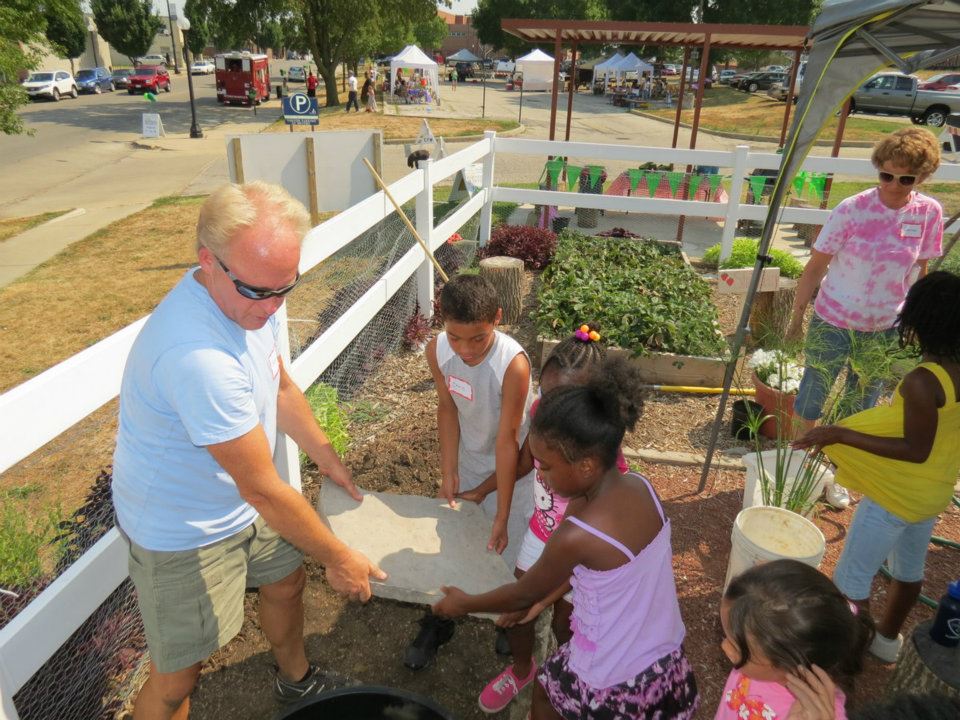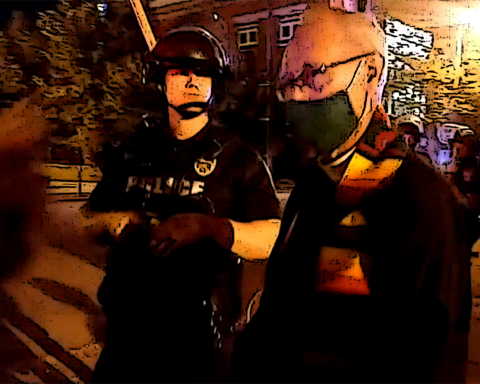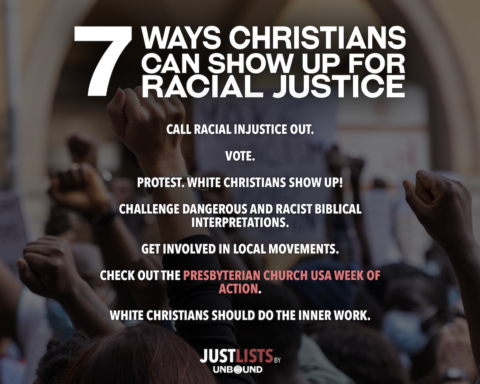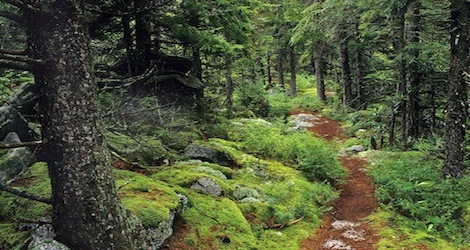Lessons from Faith-Based Community Organizing for Eco-Justice in Chicago
By Clare Butterfield, Director of Faith in Place View and Print as PDF.
View and Print as PDF.
Anyone who follows the environmental movement, whether sympathetically or critically, can hardly miss that its principle demographic is white, middle class, generally well-educated people. If the typical environmentalist is really as portrayed on the television show Portlandia, then we not only wear Birkenstocks and ask wait staff at our trendy restaurants whether the local chicken had an opportunity to play with its friends before it died, we also strive to reduce our carbon footprints to zero. There is, incidentally, only one way to do this, and it tends to be ignored by most religious traditions.
Why the environmental movement is so white is one question worth asking. I take that question up as the director of an organization that works on environmental issues in the context of faith, in partnership with religious congregations of all traditions. By reaching out to the full faith community, we at Faith in Place have put out an invitation that has been answered by people of all backgrounds and experiences, and answered enthusiastically.
___________________________________________
Why the environmental movement is so white is one question worth asking… This division becomes particularly evident in the narratives we tell and in the prioritization of some
subjective experiences of nature over others.
___________________________________________
This question of social isolation or excessive whiteness is one that is starting to be discussed among people who care about the environment (though, of course, the question of environmental racism has been discussed in communities of color for a long time). Certainly, the census data on the U.S. population is clear enough. In 2042 we will be a majority non-white country, and any purposeful organization or institution that wants to have a future should be paying attention to that.
Where does this division come from? According to Robert Bullard, one of the earliest investigators of environmental justice and environmental racism, there are three categories of environmental elitism: (1) the privilege from which most environmentalists come; (2) an ideological environmentalism through which benefits go to environmentalists and costs to non-environmentalists; and (3) impact elitism, by which reforms have a disproportionate impact on the disempowered. This third view is fueled by the assumption that environmental regulations always have a negative impact on jobs, hurting those who most need them.[1]
At its most cynical this conflict can be expressed as a conflict between animals, say polar bears, and people—those who could be working if the elitist environmentalists would just let them. And the conflict has plenty of deep historical roots. Environmental organizations have their beginning in the conservation movement in the United States, which was a movement to set aside natural places and protect them from development. While I’m profoundly grateful for our national park system, and have seen some of them myself, I understand that this emphasis sets up a dichotomy between nature and people, and people come off the worse for it.
This division becomes particularly evident in the narratives we tell and in the prioritization of some subjective experiences of nature over others. To put this into the context of our own experiences here at Faith in Place, some of our staff are from urban backgrounds and some rural. I, as someone who grew up in rural central Illinois, think of darkness as a beautiful thing—restful and peaceful. If you grow up in a city though, as we’ve learned from the youth in our programs, darkness is scary.
It is important not to judge one experience as more valid than the other, but traditional environmental groups which come out of the conservation movement often assume that their experience of nature (which is a luxury to acquire) is somehow normative, and that any other experience is in need of correction.
___________________________________________
Environmental justice is an attempt, not only to challenge these internal power structures, but also to focus on the disproportionate impacts and burdens of environmental degradation on communities of color.
___________________________________________
Environmental justice is an attempt, not only to challenge these internal power structures, but also to focus on the disproportionate impacts and burdens of environmental degradation on communities of color. Disproportionate impact means: the jobs from an industrial process go here but the toxic wastes from that process go there. This is a simplistic formulation, but it’s based in a pretty robust history.
The gap between conservation efforts and environmental justice efforts is wide: Ansel Adams photographs of mountains arrayed on one side, and smokestacks belching particulate pollutants on the other. These phenomena are linked, of course. What doesn’t go here, goes there. But when communities representing these different “sides” come together, the result is often a “talking at” rather than a genuine dialogue. The more privileged groups—the larger, better staffed, better funded ones—have an easier time getting access to the microphone. These groups, then, get to ensure that pristine natural areas are defended against industrial process (at least they can occasionally prevail in such a fight, thanks be to God, while leaving the areas of greater vulnerability to bear a more concentrated load of these self-same processes.
This matters in all kinds of ways. Environmental groups tend to look on the gloomy side of things, and they don’t always remember to offer positive alternatives to the things they are against. That can come across in some communities as a bunch of privileged outsiders trying to take away local jobs, and then, when the fight is over, leaving to return to their comfortable suburbs in other, healthier climes.
From the point of view of a faith-based organization working on our overall connection to the life around us, we want to respond by enlarging the question. Ecological concern is a concern for life. It is a fundamental question of how we respond to the fragile gift we have been given. We celebrate the beauty of this earth in all its rich complexity, including (emphatically including) the rich complexity of human-ness.
If we expand that understanding to our whole embodied situation on the earth, then we’ll start to see that the most fundamental ethical questions which control our activity are, in some sense, ecological questions. Who are we, why are we here, how shall we be here together? And how shall we treat one another? Kindly, our religions say (they do not merely suggest this). And so our environmental activity should be carried out kindly. Our conversations with one another will be respectful of the life before us. We will see the embodiment of the holy in the other, and we will learn to listen, perhaps even to love.
___________________________________________
And we have found that race by itself is a very poor predictor of specific interest on environmental matters.
___________________________________________
Somehow we tend to compartmentalize this teaching so that it doesn’t apply when we are engaged in a corporate activity such as working on an environmental issue in someone else’s community. But if we understood it to apply all the time, to all our relationships (with humans and with non-humans), we would approach all of this work in a fundamentally different spirit. And that, indeed, would be the spirit of justice which all of us are seeking. Justice for the least of these, and for every living thing.
For us, this means ensuring that we bring everyone we can to the table as equals. It means providing the space to hear each experience respectfully and with as much understanding as our own individual experience permits. At Faith in Place, we try not to make assumptions about who is interested in our work, except to assume that when the long-term livability of the planet is at stake, everyone is interested. And we’ve found that to be the case. This means, among other things, that we don’t ghettoize participation based on race. If a person of color is interested in working with us, we don’t assume that he or she will want to work only on issues of toxic dumping in their community—on environmental issues which relate to things being done to them. They might also want to take on issues of over-consumption, of personal responsibility and relationship; perhaps they want to put in a native plant garden or gain the experience of natural places around them that seem to be the province of “others.”
And we have found, through this approach, that race by itself is a very poor predictor of specific interest on environmental matters. Our butterfly gardeners are of every color, and so are our policy advocates. African-American businessmen are as intrigued by the possibility of solar power as businessmen generally, and African-American contractors as capable of weatherizing a home. But when the weatherization stimulus dollars washed through Chicago, and had to be spent quickly, they washed through all the usual hands, and most of those hands were white. We noticed this, and the African-American contractors we know noticed it too. At least by being in the conversation as a bridge-builder we were able to point it out as an issue of environmental justice, though it wasn’t what anyone expected to hear as one.
Moreover, by not limiting the justice conversation to the concentration of toxins in particular neighborhoods, we have been able to expand our outreach, and we have discovered passionate interest waiting to be taken seriously by the larger environmental community. We have learned that questions of justice go to opportunity and access, as well as to disproportionate impact. And when an issue of environmental justice in a particular neighborhood does arise, we can be there for each other in the fullness of our community, because standing together in love and justice is what our faiths teach us to do.
Learn more about Faith in Place and get involved
Action alert from Faith in Place: Support a Moratorium on Hydraulic Fracturing
Read about Clean Power Coalition’s campaign victory to put an end to the pollution from Chicago’s two coal-fired power plants!
Read more articles like this one in the Nov 2012–Jan 2013 issue, “Hope for Eco-Activists: Discovering an Environmental Faith“
Notes
[1] Bullard, Robert D., Dumping in Dixie, Race, Class, and Environmental Quality, Westview Press, Boulder CO, 1990, pg. 9.
Rev. Dr. Clare Butterfield is the Director of Faith in Place, an interfaith environmental ministry in Chicago that gives religious people tools to become better stewards of Creation. Faith in Place congregations work together to support renewable energy, conserve energy, build markets for local sustainable agriculture and fair trade products, and train the next generation of stewards of the earth through urban agriculture with youth. Rev. Dr. Butterfield is an ordained Unitarian Universalist community minister. She has a D.Min. from Chicago Theological Seminary (2008) with a focus on faith and the environment. an M.Div. from Meadville Lombard Theological School (2000), a J.D. (University of Illinois College of Law, 1983) a B.A. in History (University of Illinois 1980).







Unbound Social